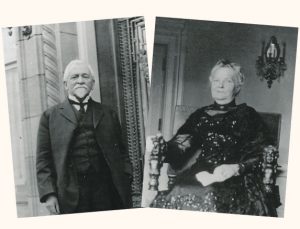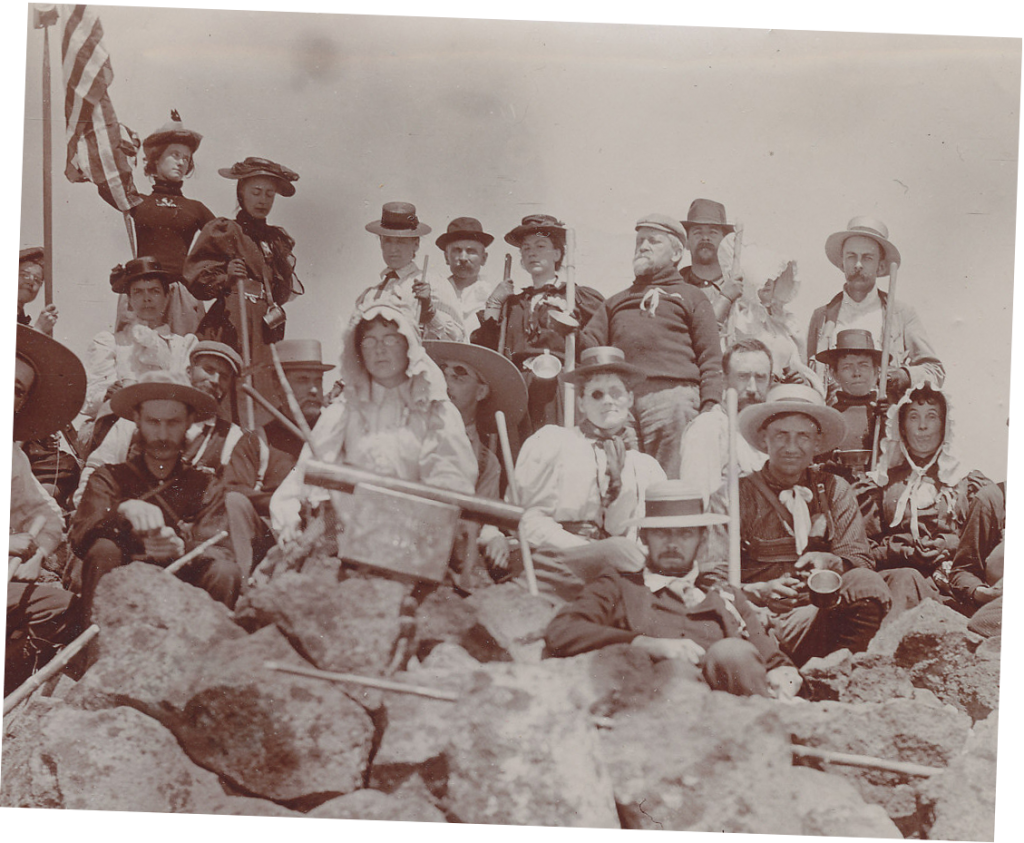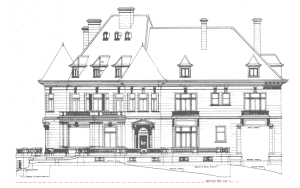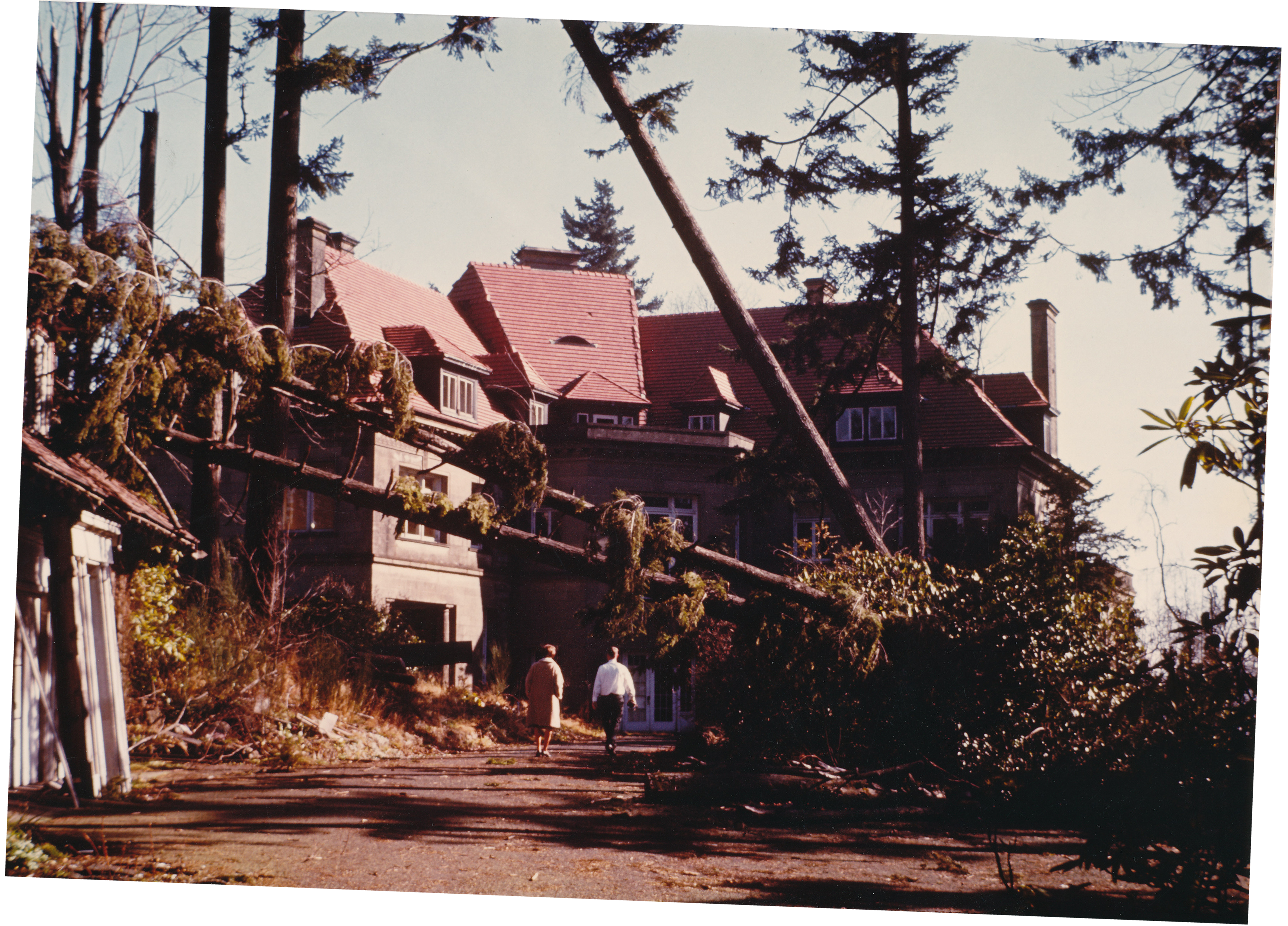History
BUILDING A LIFE, BUILDING PORTLAND

Henry Pittock (c.1834-1919) was born in London, England but grew up in Pittsburgh, Pennsylvania. In 1853, when Henry was 19, he headed west on the Oregon Trail to seek his fortune. A year later, his future wife Georgiana Burton (c.1845-1918) left Missouri with her family and headed west as well. When Henry and Georgiana arrived in the area, Portland was a frontier “stumptown” competing with Oregon City to become the major trade and industrial center for the region.
Henry found work as a typesetter at The Oregonian at a time when the newspaper industry was financially risky and fiercely competitive. More than 30 newspapers were launched in Portland during this period. On June 20, 1860, Henry and Georgiana married and five months later, he was given ownership of the paper in exchange for back wages. Henry went on to transform The Oregonian into a successful daily newspaper that is still printed today.

AN ADVENTUROUS LIFE
While best known for being a successful newspaper publisher, Henry Pittock also built a financial empire by investing in real estate, banking, railroads, steamboats, sheep ranching, silver mining, and the paper industry. He was an avid outdoorsman, bicycle enthusiast, and was among the first group to climb Mount Hood. Georgiana Pittock became a founder and fundraiser for many charities and cultural organizations, such as the Ladies Relief Society, Women’s Union, and the Martha Washington Home, a residence for single, self-supporting women.

BUILDING A GRACIOUS HOME

It wasn’t until the early 1900s that Henry Pittock started planning his “mansion on the hill” on property that had panoramic views of Portland, the Willamette River, and the distant Cascade Mountains. Construction began in 1912 and Henry and Georgiana moved into the home in 1914 with eight other members of the family. The couple only lived in the Mansion for roughly four years before they died. Family continued to live in the home into the 1950s. The last residents, grandson Peter Gantenbein and his father, Edward, moved out in 1958 and put the Mansion up for sale.

THE FATE OF PITTOCK MANSION
The Mansion sat empty for four years and was hit by the Columbus Day Storm on October 12, 1962. Hurricane-force winds damaged roof tiles and window panes which then allowed water to infiltrate the Mansion. By 1964, the Mansion was in poor condition and developers expressed interest in tearing it down and turning the estate into a subdivision. Dedicated citizens of Portland rallied and assisted the City in raising the funds to purchase the property for $225,000, which included $67,500 raised by citizens.

SAVING PITTOCK MANSION

The work needed to restore the Mansion and transform it from a private residence to a public space took 15 months. In 1965, Pittock Mansion opened to the public as a historic house museum.
In 1968, the nonprofit Pittock Mansion Society was formed to take on the responsibility of furnishing the Mansion, taking care of the collection, and providing educational activities.
PITTOCK MANSION TODAY
In 2007, the Society took over the day-to-day museum operations from Portland Parks & Recreation and has been operating the historic house museum ever since.
The Pittock Mansion Society is a 501(c)3 nonprofit organization whose mission is to inspire understanding and stewardship of Portland history through Pittock Mansion. The Society also works with Portland Parks & Recreation to maintain and preserve the historic buildings. All admissions, memberships, donations, grants, and museum store purchases go to support Pittock Mansion and its mission.



